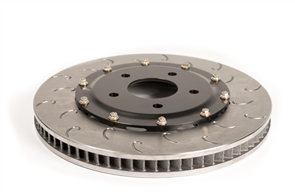When it comes to vehicle safety, efficient braking systems are paramount. Disc brakes have emerged as a standard feature in modern automobiles, offering superior performance and reliability. At the heart of a disc brake system lies the disc brake rotor, a crucial component that plays a vital role in ensuring effective braking. In this article, we will explore the disc brake rotor, its function, construction, types, and the significance of regular maintenance.
Function of the Disc Brake Rotor:
The disc brake rotor, also known as the brake disc, is a circular metal plate that rotates with the wheel. Its primary function is to provide a surface for the brake pads to grip and create friction, which in turn slows down or stops the vehicle. When the brake pedal is pressed, hydraulic pressure is applied to the brake caliper, causing the brake pads to clamp onto the disc brake rotor, generating the necessary friction to decelerate the vehicle.
Construction and Materials:
Disc brake rotors are typically made from cast iron or composite materials. Cast iron rotors are the most common due to their excellent heat-dissipation properties and durability. They are manufactured by pouring molten iron into molds, which are then cooled and machined to achieve the desired shape and dimensions. Composite rotors, on the other hand, are made by combining a metal core with a layer of lightweight and high-performance materials such as carbon ceramic or carbon fiber-reinforced polymers. These composite rotors offer exceptional heat resistance and reduce unsprung weight, improving overall performance.
Types of Disc Brake Rotors:
Disc brake rotors come in various types, each with its own advantages and specific applications. The most common types include:
Solid Rotors: These are the standard rotors found in most vehicles. They consist of a solid, one-piece construction and provide reliable braking performance for everyday driving conditions.
Vented Rotors: Vented rotors feature internal vanes or fins between two rotor surfaces. These vanes promote better heat dissipation, reducing the risk of brake fade during prolonged or heavy braking.
Slotted Rotors: Slotted rotors have shallow slots machined into their surfaces. These slots help to dissipate heat and gases that can build up between the brake pads and the rotor, maintaining consistent braking performance and minimizing the risk of brake fade.
Drilled Rotors: Drilled rotors feature holes drilled through their surfaces. These holes help dissipate heat and prevent the buildup of gas and debris, providing improved wet-weather performance. However, drilled rotors are prone to cracking under extreme stress and are more commonly used in high-performance applications.
The Importance of Maintenance:
Regular maintenance of the disc brake rotor is essential to ensure optimal performance and longevity. Over time, rotors can become worn or develop uneven surfaces, leading to vibrations, reduced braking efficiency, and increased stopping distances. Proper maintenance includes periodic inspection, measuring rotor thickness, resurfacing or replacement when necessary, and ensuring that the rotors are free from rust and debris.
The disc brake rotor is a vital component in a vehicle's braking system, responsible for converting kinetic energy into heat energy through friction. By understanding its function, construction, types, and the significance of maintenance, we can appreciate its importance in ensuring safe and efficient braking. Whether you drive a daily commuter or a high-performance sports car, maintaining the health and integrity of your disc brake rotors should always be a priority to ensure optimal braking performance and road safety.
For More Info:-




.jpg)

Comments